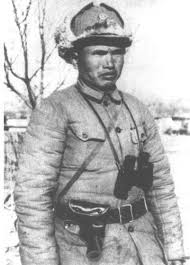In October 1934, Mao Zedong suggested marching toward the southwestern province of Guizhou, where the enemy forces were weak. According to the plan, the major force of the Red Army needed to cross the turbulent Wujiang River.
But, how can an army advance without a bridge?
Wang Yaonan, Commander of the Engineer Battalion in the First Front Red Army, was commissioned to build one.
He threw a leaf into the river to test the flow velocity of the water, but was startled to find it to be over 2 meters per second – a speed that would make it impossible to build a bridge.

With limited materials to work with, Wang came up with the idea of making bamboo rafts and connecting them together to form a floating bridge.
As a precautionary measure in case a platform was swept away by the raging water, all the rafts were made of several layers of bamboo and were placed at a slanted angle so as the gushing flow would not carry them along. About 300 rafts were connected by nails and extended over the 350-meter-wide river like a dragon, with both ends fastened to the banks.

On January 3, 1935, the main force successfully crossed the Wujiang River.
Wang’s actions were crucial to the survival of his contingent that Liu Bocheng, the Chief of the General Staff said: “As long as Wang has a cigarette, there is no slope that the Red Army cannot climb over; as long as Wang has liquor, there is no river that the Red Army cannot cross.”
Wang, who passed away in 1984, is regarded as a pioneer of the PLA Engineering Corps and was honored as the “King of Military Engineering.”









